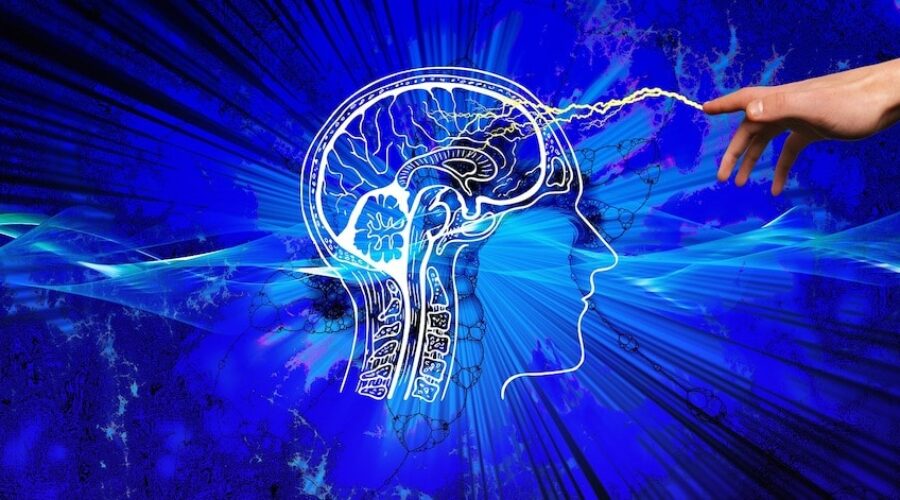What Receptor Does Ketamine Bind To?
Ketamine, like all drugs, achieves its effects by binding to receptors in the brain. So which receptor does ketamine bind to? Well, there isn’t actually just one that ketamine affects. There are multiple. That being said, ketamine is a common NMDA receptor antagonist (meaning it inhibits its activity). The binding of ketamine to NMDA receptors is crucial for its effects.
Let’s examine the binding of ketamine to NMDA receptors and the various changes that follow from this activity. It will also be helpful to take a look at the other receptors that ketamine binds to, as these also play an important role in the effects of ketamine.
Looking for ketamine therapy? Click here to find top rated ketamine clinics near you
How Ketamine Affects The NMDA Receptor
When ketamine binds to the NMDA receptor, it has quite a paradoxical effect. As an NMDA antagonist, the compound blocks the receptor, yet this produces an increase in brain levels of glutamate. This increase in glutamate levels also seems to be responsible for the wide-ranging effects of ketamine.
It is important, however, that this surge in glutamate is often in low doses. High (anesthetic) doses of ketamine block glutamate neurotransmission (which is when brain cells pass glutamate between each other). Sub-anesthetic doses of ketamine, in contrast, result in the blocking of NMDA receptors, along with the paradoxical increase in glutamate neurotransmission.
ALSO READ: What Is MDA? Everything To Know About The ‘Love Drug’
Ketamine Binding To NDMA Is Central To Its Effects
The burst of glutamate from ketamine’s binding to NMDA receptors is crucial for the drug’s varying effects.
NMDA And The Subjective Effects Of Ketamine
Ketamine’s binding to NMDA receptors causes the transient subjective effects of ketamine, namely the dissociative effects, which can feature the following.
- Visual and auditory distortions or hallucinations
- A sense of floating outside of your body
- Feeling detached from your environment or self
- Disorientation
- Confusion
NMDA And Mental Disorders
The binding of ketamine to the NDMA receptors is also responsible for the therapeutic effects of the compound. NMDA receptors often play a role in mental disorders, such as major depression, anxiety, and addiction. NMDA receptor antagonists, including ketamine, are also known to improve these conditions.
One proposed explanation for ketamine’s therapeutic effects is that the drug increases glutamate, via its binding to NMDA receptors, in areas of the brain with deficits in synaptic connections. This is the ‘glutamate surge’ hypothesis.
Patients with depression and post-traumatic stress disorder (PTSD) have lower brain volume in areas of the brain such as the prefrontal cortex, anterior cingulate cortex, and hippocampus. Researchers state this is likely due, in part, to the loss of synapses.
Looking for ketamine therapy? Click here to find top rated ketamine clinics near you
The prefrontal cortex plays a critical role in our mental health; it contributes to a variety of functions, such as the below.
- Focusing one’s attention
- Predicting the consequences of one’s actions
- Impulse control
- Managing emotional reactions
RELATED: What Does Ketamine Feel Like?
Ketamine And Other Receptors
As mentioned previously, ketamine binds to others receptors in the brain, which also helps to explain the effects of this compound.
Ketamine Binds To Serotonin Receptors
In the brains of people with depression, there is a low density of serotonin 1B receptors, a type of receptor that the neurotransmitter serotonin binds to. A 2020 study published in Translational Psychiatry found that ketamine may alleviate treatment-resistant depression due to its interaction with this particular serotonin receptor.
As New Atlas reports on the findings:
“The study suggests this ketamine-induced binding of serotonin 1B receptors increases the release of dopamine, while reducing levels of serotonin. This newly discovered mechanism of ketamine is hypothesized to play a role in the overall therapeutic benefits of the drug.”
Through this binding, ketamine increases the number of serotonin 1B receptors, which helps to boost dopamine in the brain. This is important in the context of depression, as a decrease in dopamine is associated with depressive-like behaviors. Contrary, increases of this neurotransmitter can help prevent such behaviors. Researchers have tied a deficit in dopamine to depressive symptoms like anhedonia (the inability to feel pleasure) and a lack of motivation.
Clinic Spotlight: Relievus Pain Management – Philadelphia, Pennsylvania
Ketamine Binds To Opioid Receptors
Ketamine also binds to opioids receptors in the brain. The authors of a 2018 study published in the American Journal of Psychiatry state the following:
“Ketamine’s acute antidepressant effect appears to require opioid system activation. Dissociative effects of ketamine in humans are not mediated by the opioid system, nor do they appear sufficient without the opioid effect to produce the acute antidepressant effects of ketamine in adults with treatment-resistant depression.”
If this is true, then it is not just the subjective effects of ketamine that contribute to its therapeutic potential. Studies have revealed that the quality of the ketamine experience predicts improvements in depression. But it may be that the mystical-type effects of ketamine are not the only relevant factor in treating mental disorders. Ketamine might lead to better clinical outcomes through its effects on receptors that are not involved in the drug’s subjective effects.



